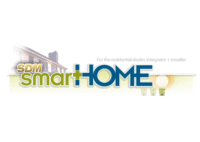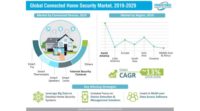Serene Homes didn’t intend to pioneer a next-gen security trend when it decided to build a connected community; like most companies creating a new offering, it was simply trying to overcome the obstacles of a crowded market. But its new Hills of Windridge development in Fort Worth, Texas could be introducing a fascinating new aspect of connectedness — not only among home and mobile technology devices, but also among homeowners in an entire “smart” community.
While the connected home is nothing new, the idea of a connected community has yet to enter the conversation. Serene’s unique Hills of Windridge development of 1,200 smart homes could mark the debut of the next connected.
It started with Serene Homes, a new real estate developer in Texas, looking for ways to differentiate itself as it prepared for its Fort Worth inauguration. In today’s housing industry, hardwood floors, energy efficiency, granite countertops and other amenities have become the norm rather than the exception. On top of that, Serene is competing in the notoriously healthy Texas housing market, where an abundance of land means development is constantly happening.
“The original incentive was to provide added worth and entice a wide group of consumers while staying within our budget,” said Arek Meyer, vice president of sales, Serene Homes. “We needed a cost-effective way to future-proof the development.”
To Serene — a company that by name is dedicated to providing serenity for its residents — connected-home technology had become strong and sustainable enough to serve as its key differentiator.
In order to successfully bring the connected home into its business model, Serene turned to Premier Electronics for a solution. Premier recommended a built-in system that could be standard enough to meet the basic needs of many different homeowners, but scalable enough to provide the opportunity for customization and add-ons. After comparing dozens of manufacturers, Premier and Serene decided on a package from Honeywell, Melville, N.Y., which included a built-in Honeywell Tuxedo Touch home controller, an exterior IP camera, one Z-Wave door lock and thermostat, and two Z-Wave light switches. The devices operate together via Honeywell Total Connect Remote Services, which enables wireless control of the features from anywhere using an all-in-one mobile app.
“The Honeywell name stands for reliability and ease-of-use, which are crucial qualities for implementation at this scale,” said Shawn Griffith, president, Premier Electronics. “We chose this technology because it offers the most complete, user-friendly solution, with features such as tutorial videos built directly into the panels and voice commands for convenience.”
In addition to receiving the standard set of technology, each homeowner will be scheduled for an educational training with Premier representatives immediately after a home purchase. During that appointment, Premier introduces the homeowner to the technology and teaches them best practices using a hands-on approach. Presented in four model homes, the training not only provides less-savvy homeowners the chance to connect directly with experts and get comfortable with new technology, but it also gives Premier the opportunity to upsell for families that have more particular needs.
“Each customer has varying degrees of knowledge and lifestyles, and for many this training is totally eye-opening,” said Premier Electronics co-owner and former NFL linebacker for the Dallas Cowboys, Bradie James. “Our goal is not to hard-sell products but to educate them through our stories and experiences, and to give them the confidence to make informed decisions in an area that’s still pretty cutting-edge.”
Providing this type of support for each homeowner in the Hills of Windridge doesn’t come without its challenges. In fact, to Premier, that was the main obstacle of the project — building a large enough labor force to accommodate the rapidly-expanding development.
“We have high standards for our technicians, so it can be difficult to find the right pool of skilled workers with so much competition out there,” Griffith said. “This is a good problem to have, though, as it indicates the demand is there, and the connected home is here to stay.”
Serene is just beginning construction for its first set of homeowners, so it’s still early to know the full impact of 1,200 connected homes operating as one community, versus individual connected homes scattered throughout a regular neighborhood. But one possible implication of a connected community is that it could draw certain populations. Serene seems to be attracting an initial cluster of residents who are “global citizens,” meaning they travel for business or holiday, and are frequently away from their homes. Connected communities could also attract a population of families with young children, where safety and visibility are especially important.
“This isn’t a gated community, but with the smart home technology installed in every home, you know it’s a protected one,” said Meyer.
It’s this type of application that leads Meyer to believe connected communities will actually bring people closer together. Meyer envisions many instances in which a connected community could encourage personal interaction between neighbors. In addition to being able to tap the enhanced visibility of neighbors to solve investigations, the remote alerts provided by smart home technology allow a homeowner to involve others in their response. For example, if a homeowner is expecting an expensive package while they’re away from home, the system cameras can trigger an email alert when it’s delivered; this gives the homeowner the verification needed to ask a trusted neighbor to bring it inside.
“Getting support through your neighbors hasn’t died with the dawn of the smartphone,” Meyer said. “On the contrary, once homeowners start to move into the development, I think they’re going to come up with tons of ways to help each other, and that’s worth everything.”











